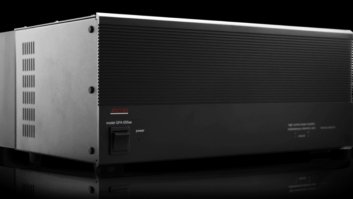
TCL Communication, part of Chinese consumer electronics giant TCL Corp., is one of multiple Chinese smartphone vendors, including Huawei and ZTE, aiming to build their U.S. market presence.
TCL, whose products bear the Alcatel OneTouch brand, entered the U.S. cellphone market in 2007 by selling to regional carriers, then in October 2011 sold a phone to a national carrier – T-Mobile — for the first time.
Today it sells phones through all major carriers and with MVNOs, sells unlocked phones direct to consumers and through retailers, and sells smart watches, a market that it entered this year.
Wireless-industry veteran Jon Maron recently assumed the role of marketing and communications VP for Alcatel OneTouch in North America. He oversees all product marketing and communications efforts and works with the parent company’s international business teams on global initiatives.
Maron joined Alcatel OneTouch from W2O Group, an integrated communications, business and technology services company. Maron was managing director of the company’s technology practice working with consumer, IoT, enterprise and technology brands in the U.S.
Before that, he was marketing VP for HTC Americas. He has also held senior marketing positions at LG and Sony Ericsson.
To learn more about his plans for the company, TWICE peppered Maron with the following questions:
U.S. MARKET OUTLOOK
TWICE: What are expectations for U.S. industry-wide smartphone sales in 2015 and 2016?
The U.S smartphone market, and the mobile market as a whole, has been in a gradual stage of transition over the past few years, from heavy phone subsidies by both the OEMs and carriers to more of a pay-as-you-go model, none more so than in 2015. Alcatel OneTouch has been at the forefront of this transition, which is why we’ve been steadily growing our market position in the U.S. consistently over the past few years and have moved into a solid top-five position.
In the U.S. alone, it’s estimated that the market will cross the 200 million mark by 2017 just in smartphones. That doesn’t account for all the feature phones still in use and still being sold. In fact, the notion of “bring your own device” has actually perpetuated the idea of having multiple devices rather than diminish it.
We see the market remaining dynamic with the value smartphone segment continuing to evolve. A brand like Alcatel OneTouch excels in this new market dynamic, and we will continue to grow in 2016 and beyond. Although the industry growth rate might slow a bit, possibly averaging around 10 to 11 percent globally, it’s still expected to reach the 2 billion mark by the end of next year, if not sooner.
The smartphone market globally still continues to grow as emerging markets gain traction and new, and younger, generations increasingly create demand. This is where Alcatel OneTouch as a real chance to make a difference, by offering more for less to consumers. Other manufacturers focused more on the expensive flagship space will find the entry-level and mid-tier space too hard to participate in.
TWICE: Has the growth of carriers’ no-subsidy installment-payment plans had an impact on U.S. shipments?
This is a perfect example of another force changing mobile-market dynamics, but it extends beyond this to include the impact of the unlocked or BYOD (bring your own device) forces on the marketplace as well. As devices in the mid-range of the market continue to offer greater flagship-style experiences at an even greater value, unlocked carrier-agnostic options will drive new smartphone users, and we expect this to actually increase replacement rates – not reduce them.
In terms of leasing programs, because these are relatively new, it remains to be seen how consumers will adopt these options, but the key here is keeping the smartphone affordable with this option, not inflating the overall costs – as some OEMs have done. In the long run though, giving consumers greater purchase flexibility is a win-win for OEMs and consumers both.
TWICE: With subsidized-phone programs going away, what has been the impact on the mix of phones purchased by consumers?
With subsidies decreasing, or in some cases going away, this affects the consumer market in two ways. The first scenario is the cost factor. Putting aside high-end-feature, high-end-price devices, average selling prices have fallen rapidly over the past two to three years and is expected to dip as low as $265 by 2017. That is a far cry from the $450-plus range recently seen. This will contribute to lower lease costs and give consumers choice and flexibility when it comes to upgrading or simply changing their device as feature sets continue to improve and be available at a lower cost.
With cost coming down so rapidly, every person who goes out to get a new phone for the first time, or as an upgrade, can have the features, quality and hardware that were reserved for the most expensive devices for much less. This is where Alcatel OneTouch excels.
UNLOCKING PHONES AND SALES
TWICE: Is the unlocked market growing in the U.S., and why?
Yes, the unlocked market is definitely growing. Right now we see it as accounting for less than 10 percent of the total mobile market in the U.S., but as consumers come to better understand this purchasing option, we see it growing quite substantially. The real key will be for all the carriers to embrace it, which hasn’t happened yet. Of course, the advantage for the consumer is to have the device of their choice from wherever they choose to purchase it, including e-commerce, which is growing rapidly for mobile, as it is for all purchases today.
TWICE: What is the advantage to Alcatel OneTouch in selling unlocked phones direct to consumers?
Consumer direct via the unlocked market has definitely been a growing trend in 2015 and will continue to be so in 2016. For us in 2015, this allowed us to introduce our aspirational IDOL 3 to consumers early on in the year and set the standard for the feature-packed affordable flagship that all others were measured against. This was helped by us launching our first direct-to-consumer e-commerce channel back at CES in January, and we’ve since expanded on this through other retail channels such as Amazon and HSN. Our unlocked portfolio had grown as well, offering more options for consumers, and this will continue in 2016.
ALCATEL ONETOUCH PLANS
TWICE: How does Alcatel OneTouch position itself in the U.S. market, and do you expect that to evolve?
We’ve been a rapidly growing challenger brand since the end of 2013 here in North America thanks to our deliberate value-focused approach and business-growth strategy. Today we are in a solid top-five position, and we see this momentum continuing as we focus our brand to offer great mobile experiences that deliver outstanding value and a quality handset at great prices with operating systems that consumers know and trust without bloatware or UI overlays – making our devices intuitive and easy to use.
TWICE: How do you plan to expand Alcatel One Touch’s U.S. market share?
Our growth strategy remains focused on a three-tier approach of growing our carrier-channel portfolio, expanding our unlocked portfolio direct-to-consumers, and continuing to build with our retail partners.
TWICE: How will you expand brand awareness in the U.S.?
Our partnerships with The Color Run as well as Major League Soccer clubs Toronto FC, LA Galaxy and New York City FC, will continue to be key brand-growth pieces for our brand in North America in 2016. The use of digital media to engage directly with our customers will also be critical to our brand growth in addition to other types of media. On average, people spend 43 percent of their media time on digital media — more that print and TV combined — so reaching the right people with the right content, in the right context becomes a critical path for Alcatel OneTouch. That’s a great-tie in to the sponsorships and media plans we have for the future.
TWICE: The company recently unveiled a 17.3-inch tablet, a Wi-Fi multiroom-audio speaker, and an in-car hot spot. Will you bring those products to the U.S., and do you plan to further diversify your product offerings here?
We’ll share more on this and our portfolio expansion at CES.
TWICE: Where do you see Alcatel OneTouch in five years in the U.S. market?
Certainly our goal is to be in the No. 3 position here in the U.S. Given our growth trajectory over the past few years, we certainly think this is possible as we continue to find success in this highly competitive market.













